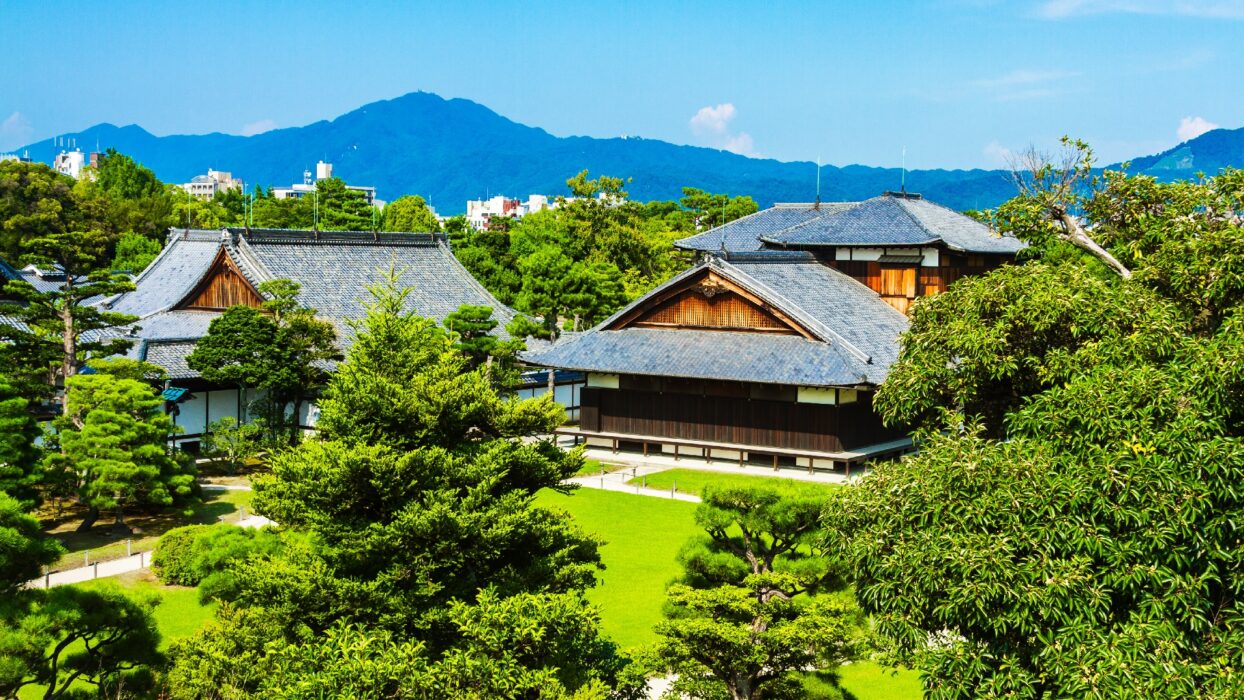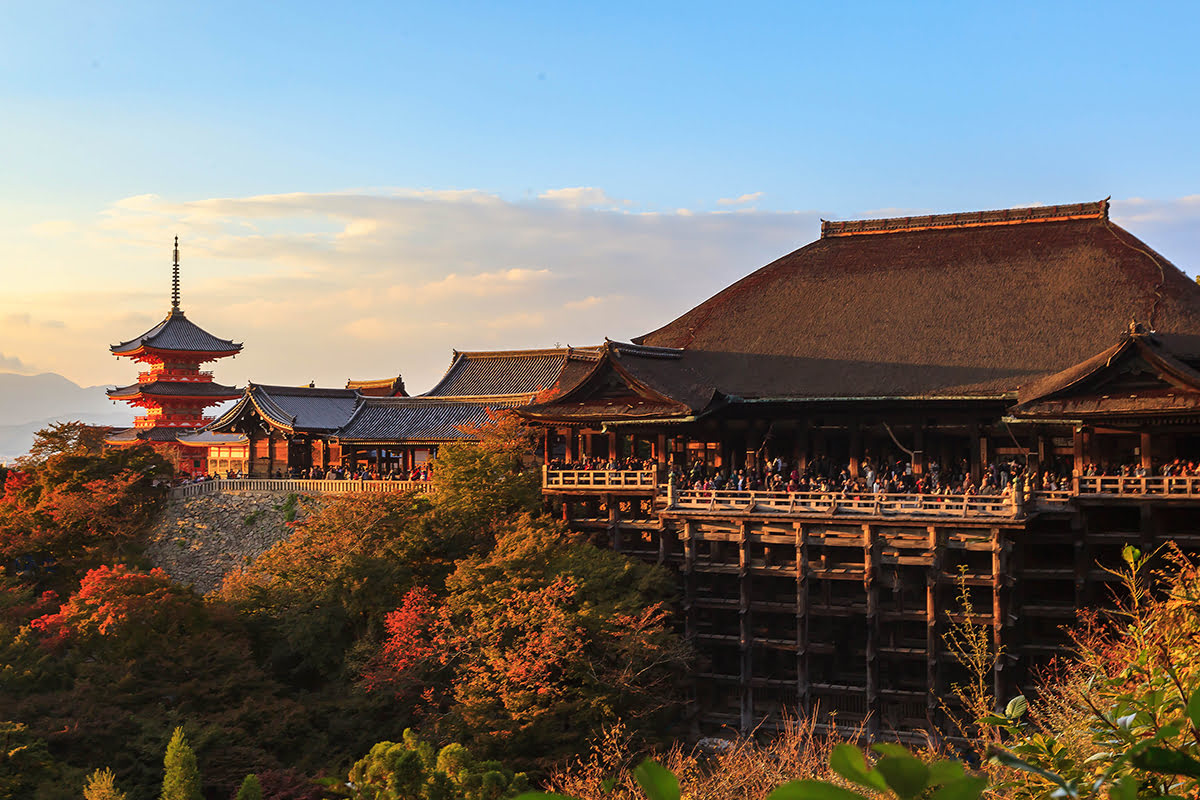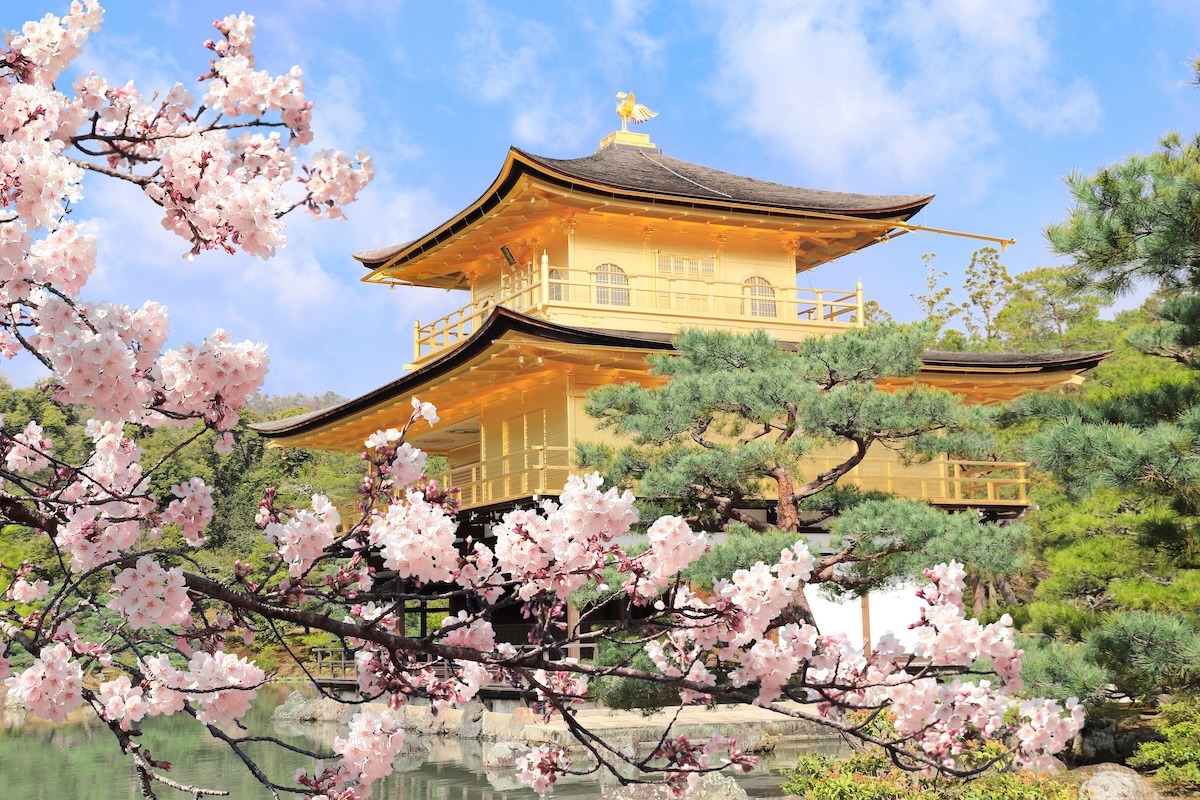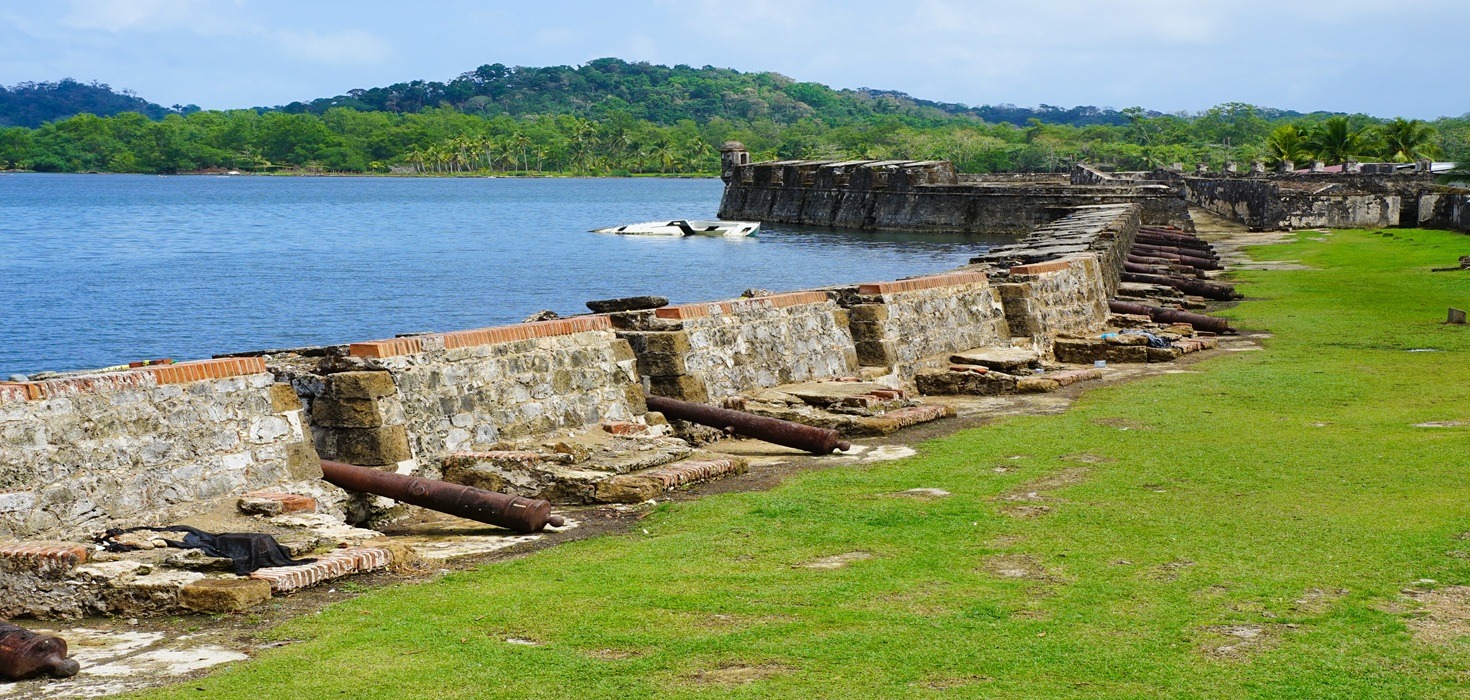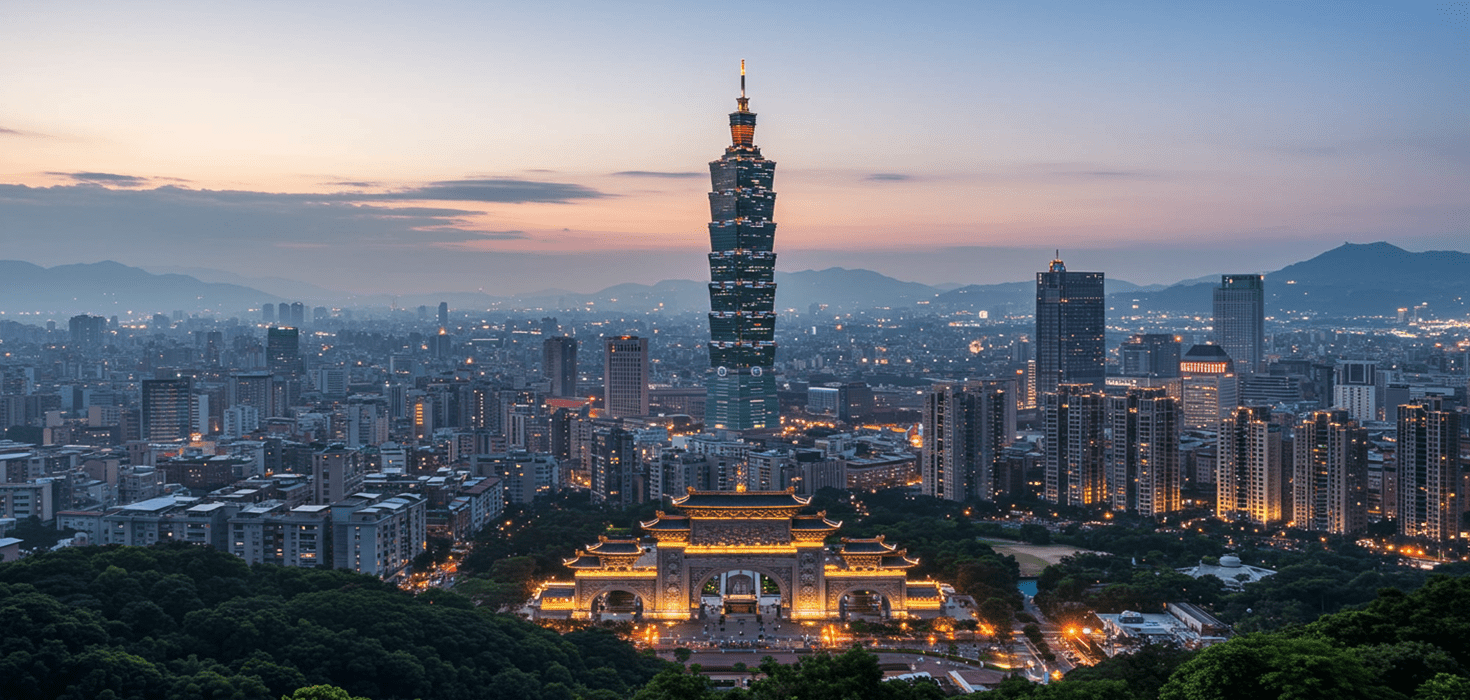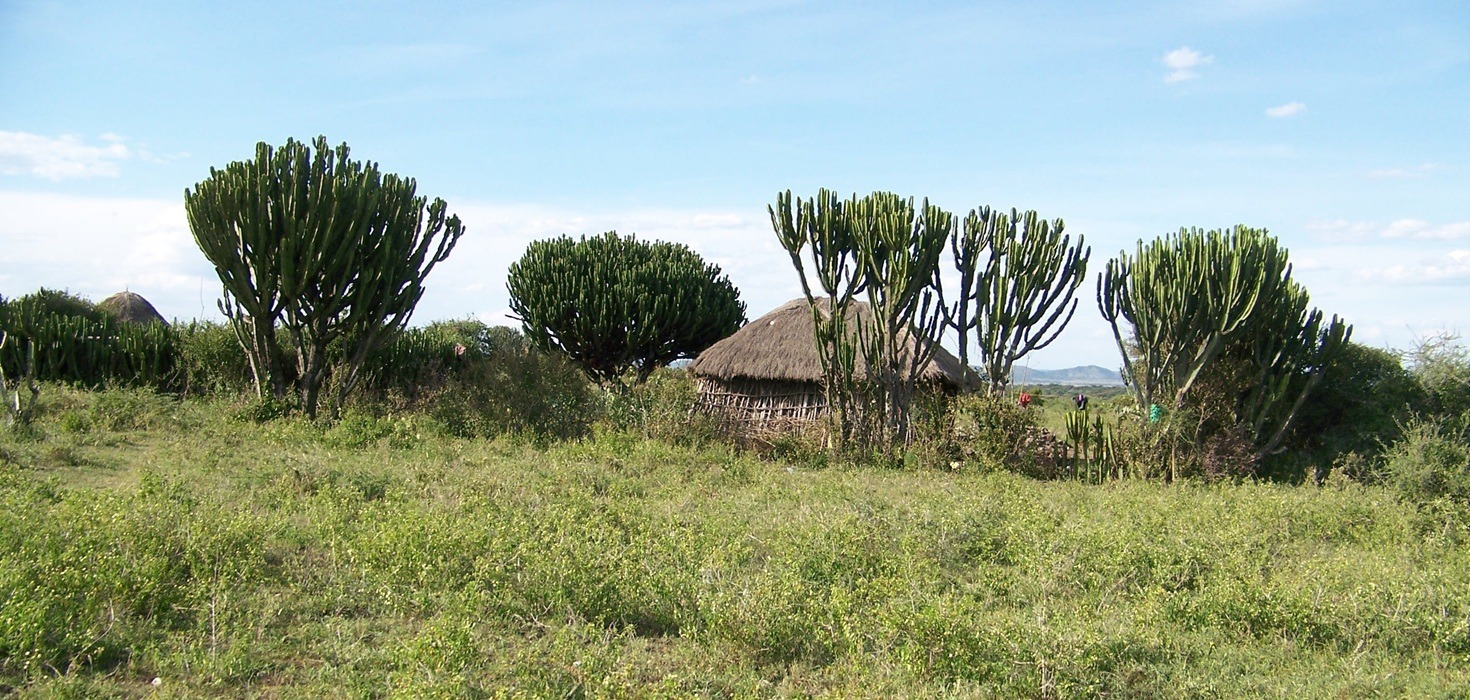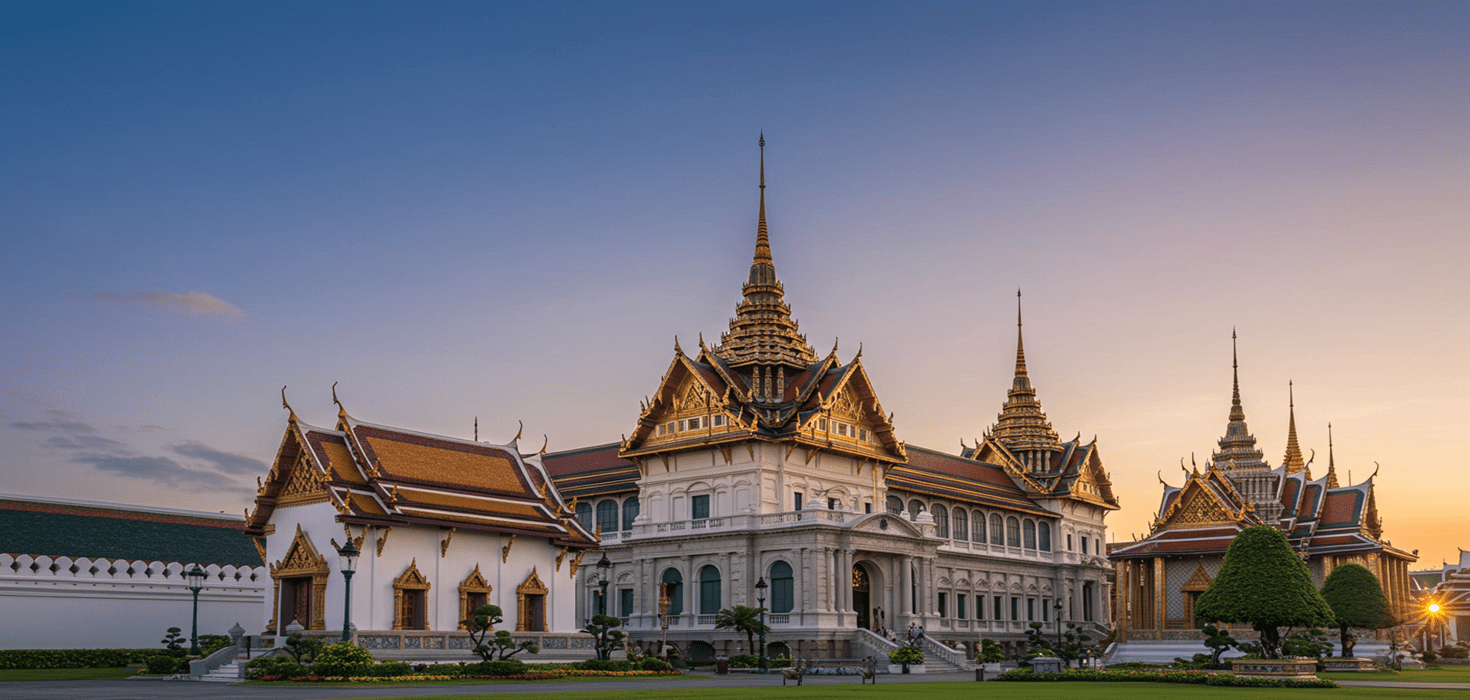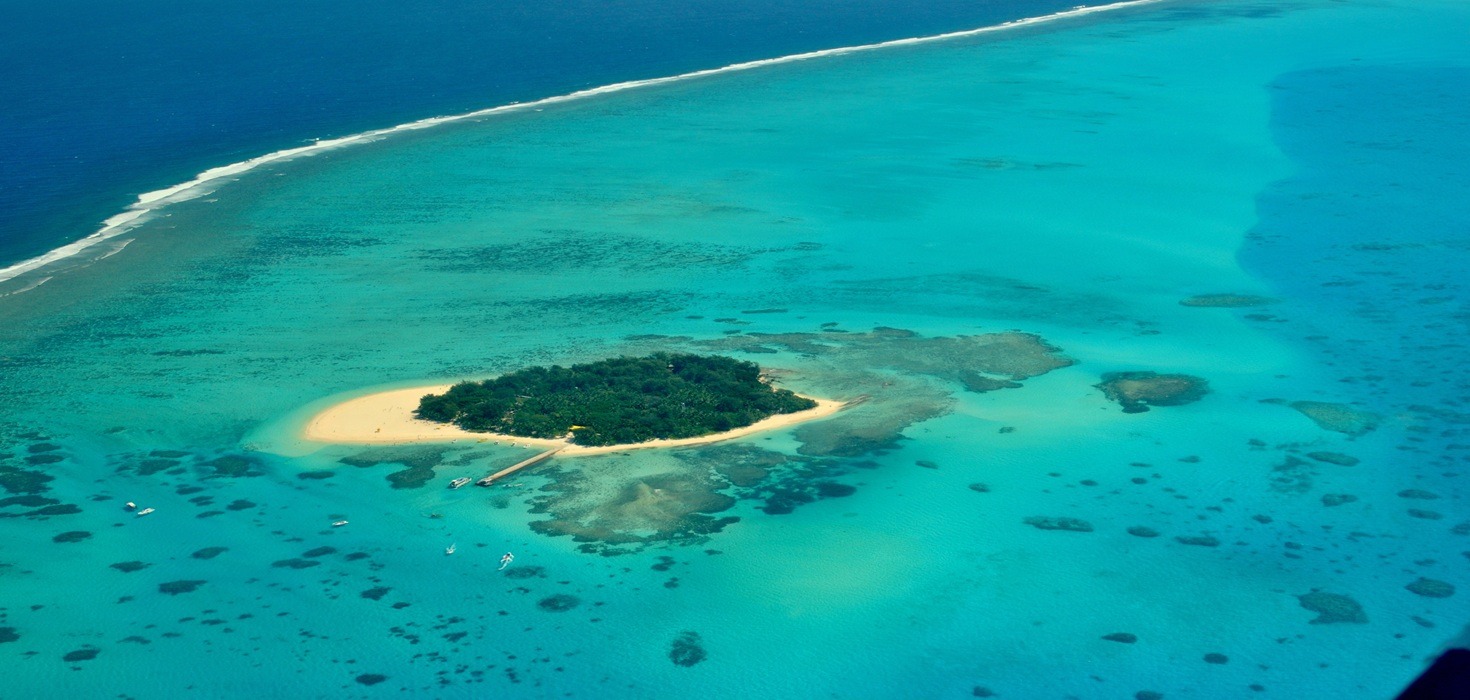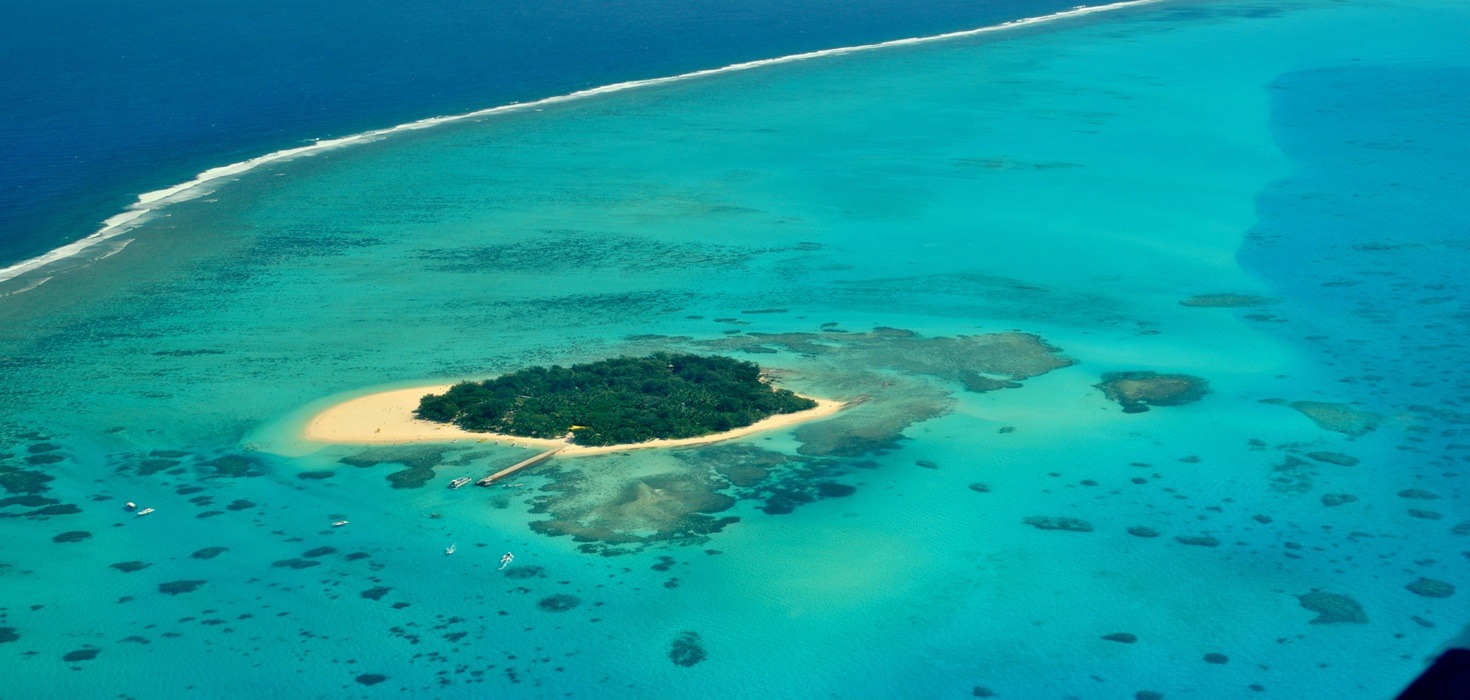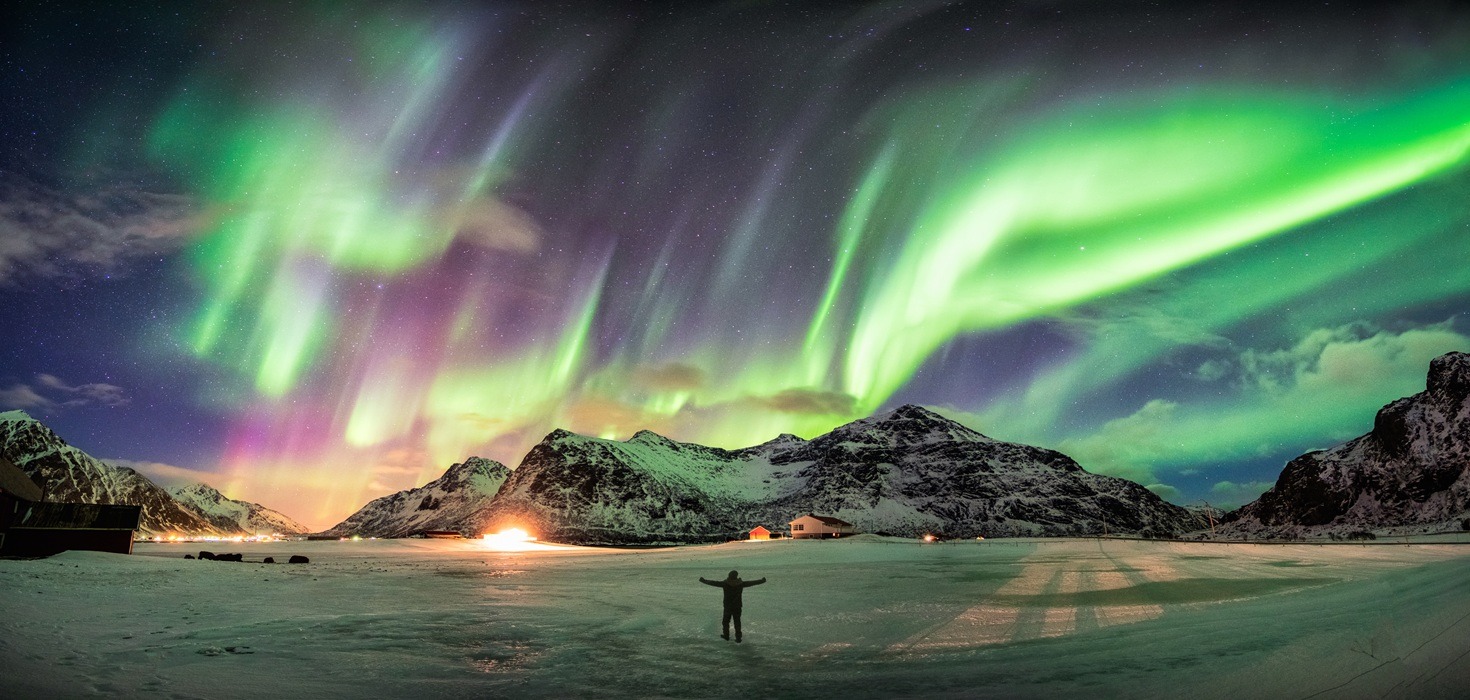Day 1: Discovering Central Kyoto
Morning
1. Nishiki Market
Start your first day with a visit to the bustling Nishiki Market, also known as “Kyoto’s Kitchen.” This five-block long shopping street is filled with over a hundred stalls and shops, offering everything from fresh seafood to traditional sweets. It’s the perfect place to sample local delicacies and immerse yourself in the vibrant food culture.
Opening hours: 9:00 AM – 5:30 PM
Address: Nakagyo Ward, Kyoto
2. Kyoto Imperial Palace
Next, head to the Kyoto Imperial Palace, the former ruling palace of the Emperor of Japan. The grounds are expansive and include beautiful gardens and historic buildings. Guided tours are available and provide a deep insight into Japan’s imperial history.
Opening hours: 9:00 AM – 4:20 PM
Address: 3 Kyotogyoen, Kamigyo Ward
Lunch
For lunch, head to Honke Owariya, one of Kyoto’s oldest and most famous soba noodle restaurants. Established over 550 years ago, this historic eatery will give you a taste of traditional Japanese cuisine.
Opening hours: 11:00 AM – 3:00 PM
Address: 322 Kurumaya-cho Nijo-sagaru Nakagyo-ku
Afternoon
3. Nijo Castle
Spend your afternoon exploring Nijo Castle, a UNESCO World Heritage site. This historic castle boasts beautiful gardens, intricate architectural details, and the famous “Nightingale Floors” that chirp when walked upon to guard against intruders.
Opening hours: 8:45 AM – 5:00 PM
Address: 541 Nijojocho, Nakagyo Ward
4. Pontocho Alley
Next, take a leisurely stroll through Pontocho Alley, a narrow street lined with traditional wooden buildings, exquisite restaurants, and teahouses. As one of Kyoto’s most atmospheric areas, it’s a great place to soak in the historic vibe.
Opening hours: Open 24 hours
Address: Nakagyo Ward
Evening
5. Gion District
In the evening, explore Gion District, Kyoto’s famous geisha district. Wander through the preserved streets and alleys, and you might catch a glimpse of a maiko (apprentice geisha) in traditional dress. The area comes alive at night with beautifully lit tea houses and restaurants.
Dinner
End your day with a delightful kaiseki (traditional multi-course Japanese dinner) at Gion Karyo. This restaurant offers a fine dining experience that showcases the seasonal flavors and artistry of Kyoto cuisine.
Opening hours: 11:30 AM – 1:00 PM / 6:00 PM – 7:30 PM
Address: 570-235 Gionmachi Minamigawa, Higashiyama Ward
Day 2: Temples and Tradition in Eastern Kyoto
Morning
1. Fushimi Inari Taisha
Start your second day with a visit to Fushimi Inari Taisha, one of Japan’s most iconic shrines. Famous for its thousands of vermilion torii gates that form a scenic path up the mountain, Fushimi Inari is a must-visit. Plan to arrive early to avoid the crowds and enjoy a more peaceful experience.
Opening hours: Open 24 hours
Address: 68 Fukakusa Yabunouchicho, Fushimi Ward
2. Kiyomizu-dera
Next, head to Kiyomizu-dera, a UNESCO World Heritage site and one of Kyoto’s most celebrated temples. The temple is renowned for its wooden stage that juts out from its main hall, offering stunning views of the cherry and maple trees below and the city in the distance.
Opening hours: 6:00 AM – 6:00 PM
Address: 1 Kiyomizu, Higashiyama Ward
Lunch
For lunch, stop by Okutan Kiyomizu, a traditional restaurant located near Kiyomizu-dera, known for its delicious yudofu (boiled tofu) dishes. Enjoy a quiet and authentic dining experience with a stunning view of their private garden.
Opening hours: 11:00 AM – 4:30 PM
Address: 3-chome-3-4-0 Kiyomizu, Higashiyama Ward
Afternoon
3. Ginkaku-ji (Silver Pavilion)
In the afternoon, visit Ginkaku-ji, also known as the Silver Pavilion. While the pavilion itself is not covered in silver, the temple grounds are famous for their beautiful gardens and the unique dry sand garden known as the “Sea of Silver Sand.”
Opening hours: 8:30 AM – 5:00 PM
Address: 2 Ginkakujicho, Sakyo Ward
4. Philosopher’s Path
After exploring Ginkaku-ji, take a leisurely stroll along the picturesque Philosopher’s Path. This stone path follows a canal lined with cherry trees and is particularly beautiful during cherry blossom season. Along the way, you’ll find several smaller temples and shrines that are worth exploring.
Opening hours: Open 24 hour
Evening
5. Yasaka Shrine
As the afternoon turns into evening, make your way to Yasaka Shrine, located at the east end of the famous Gion district. The shrine is beautifully illuminated at night and often hosts various festivals and events, making it a lively place to visit.
Opening hours: Open 24 hours
Address: 625 Gionmachi Kitagawa, Higashiyama Ward
Dinner
For dinner, delve into the dining experience at Yasakadori Enraku, a restaurant known for its traditional ambience, offering a unique taste of Kyoto.
Opening hours: 5:00 PM – 11:00 PM
Address: 573-3 Gionmachi Minamigawa, Higashiyama Ward, Kyoto, 605-0074, Japan
Day 3: Natural Beauty and Scenic Views in Western Kyoto
Morning
1. Arashiyama Bamboo Grove
Begin your final day in Kyoto with a visit to the Arashiyama Bamboo Grove. This enchanting bamboo forest offers a serene atmosphere and is perfect for a tranquil morning walk. The towering bamboo stalks create a mesmerizing view and make for fantastic photo opportunities.
Opening hours: Open 24 hours
2. Tenryu-ji Temple
Next, head to Tenryu-ji Temple, a UNESCO World Heritage site located near the Bamboo Grove. Known for its stunning landscape garden and historical significance, this temple is one of Kyoto’s most important Zen Buddhist temples.
Opening hours: 8:30 AM – 5:00 PM
Lunch
For lunch, visit Arashiyama Yoshimura to enjoy a meal with a view. This restaurant offers delicious soba noodles and provides a picturesque view of the surrounding landscapes.
Opening hours: 11:00 AM – 5:00 PM
Address: Sagatenryuji Tsukurimichicho, Ukyo Ward
Afternoon
3. Togetsukyo Bridge
After lunch, take a peaceful stroll across the Togetsukyo Bridge. This iconic bridge offers beautiful views of the Oi River and the Arashiyama mountains, making it a popular spot for both tourists and photographers.
Opening hours: Open 24 hours
4. Kinkaku-ji (Golden Pavilion)
In the afternoon, visit Kinkaku-ji, also known as the Golden Pavilion. This stunning Zen temple is covered in gold leaf and surrounded by tranquil gardens and a reflective pond, offering one of Kyoto’s most picturesque settings.
Opening hours: 9:00 AM – 5:00 PM
Address: 1 Kinkakujicho, Kita Ward
Evening
5. Ryoan-ji Temple
Spend your evening at Ryoan-ji Temple, known for its rock garden, which is considered one of the finest examples of Zen garden design. The tranquil atmosphere makes it a perfect place for reflection and relaxation.
Opening hours: 8:00 AM – 5:00 PM
Address: 13 Ryoanji Goryonoshitacho, Ukyo Ward
Dinner
For your final dinner in Kyoto, dine at Tempura Matsu, a renowned restaurant offering exquisite tempura and traditional Japanese dishes. This dining experience is a fitting end to your cultural and culinary exploration of Kyoto.
Opening hours: 12:00 PM – 1:30 PM / 5:30 PM – 7:30 PM
Address: 21-26 Umezu Onawabacho, Ukyo Ward

